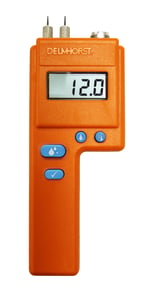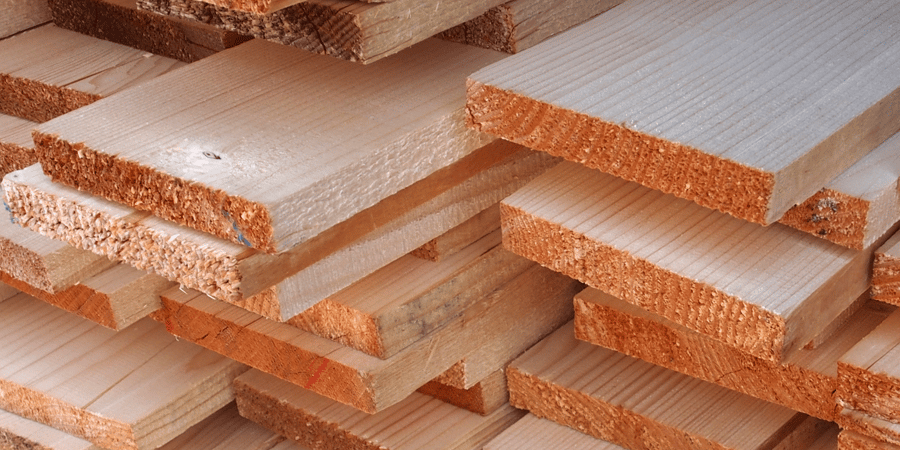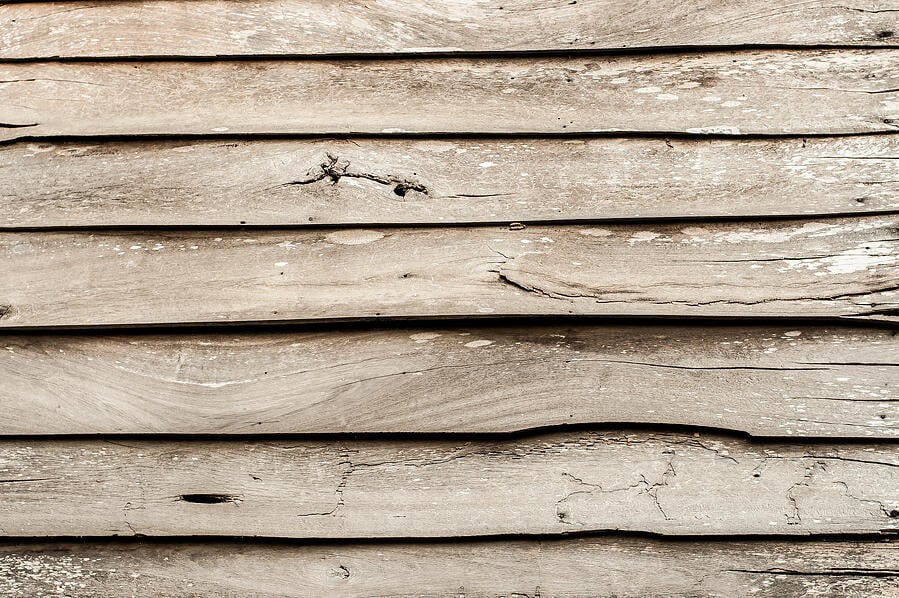What Does Moisture Content in Wood Mean?

Moisture meters are specialized devices that are designed to use either electrical resistance (pin-type) or electromagnetic radio frequencies (pinless type) to measure the amount of moisture in some kind of material—such as wood.
One question that a lot of do-it-yourself enthusiasts who aren’t as familiar with the need to monitor moisture in wood and other building materials tend to ask is: “what does moisture content in wood mean?”
A Basic Definition
Moisture content, or %MC, is the measurement of how much water is present in the wood compared to the dry matter of the wood. Technically speaking, it is possible to have a moisture content measurement over 100%—which would happen if you had more water than wood in the sample being tested. However, this is not common.
Wood is a hygroscopic material, meaning that it tends to absorb and release moisture until it reaches equilibrium with its surrounding environment. As such, in normal conditions, the moisture content of wood is largely determined by its environment—warm, dry environments tend to make wood drier, and cool, wet environments tend to make wood wetter.
Why the Moisture Content of Wood Matters
When dealing with wood for flooring and other applications, the moisture content of that wood can have an enormous impact on the quality of the wood.
For example, in wood flooring, if the wood is too dry during installation, it may end up absorbing moisture from the air at the installation site. This can cause the wood to start swelling so planks push up against one another after installation. Or, the wood may split and crack.
On the other hand, an excess of moisture in wood can cause other problems, including, but not limited to:
- Preventing adhesives from making a secure bond;
- Promoting the growth of mold in the wood; and
- Shrinkage as the excess moisture leaves the wood.
The further the wood is from having an appropriate moisture content for the environment it will be used in, the more pronounced these problems will be.
This is why anyone working with flooring and wood products needs to use a moisture meter to measure the %MC of wood. With a moisture meter for wood, it is possible to get an accurate, quantitative measurement of wood’s moisture content—which is invaluable for determining if the wood is at risk of developing problems later on.
Using Wood Moisture Meters
 Using a moisture meter to check the %MC of wood is relatively simple whether you’re using a pin-type or pinless-type meter.
Using a moisture meter to check the %MC of wood is relatively simple whether you’re using a pin-type or pinless-type meter.
With a pin meter, you simply insert the pins into the wood as deeply as you like, and push a button to get a measurement of the wood’s moisture content. With a pinless meter, you can just press the scanning plate against the wood so it’s flush with the wood’s surface. Then, push the button to get a reading.
One thing to keep in mind is that a wood moisture meter is typically calibrated to get accurate readings in one species of wood. Other species of wood have different physical properties that may throw off moisture measurements. For this reason, it’s important to know what kind of wood you’re testing, and to use a species correction chart to adjust your reading results.
Some meters may have extra features to make recording moisture measurements easier, or make the meter more versatile for a wider range of materials. For example, the J-2000 wood moisture meter has built-in species corrections for 48 different kinds of wood. This makes it easier to get accurate numbers since you won’t have to manually check a correction chart for every reading.
The method for using these special features may vary from one model of moisture meter to the next, so it’s important to consult the owner’s manual before use. Some manufacturers, like Delmhorst, offer live support to their users to help answer questions and provide troubleshooting tips.
Need to learn more about using moisture meters for flooring and wood products? Check out the free guide at the link below!
Subscribe to Our Blog
Post Related

Moisture Meters for Wood: Your Complete Guide


